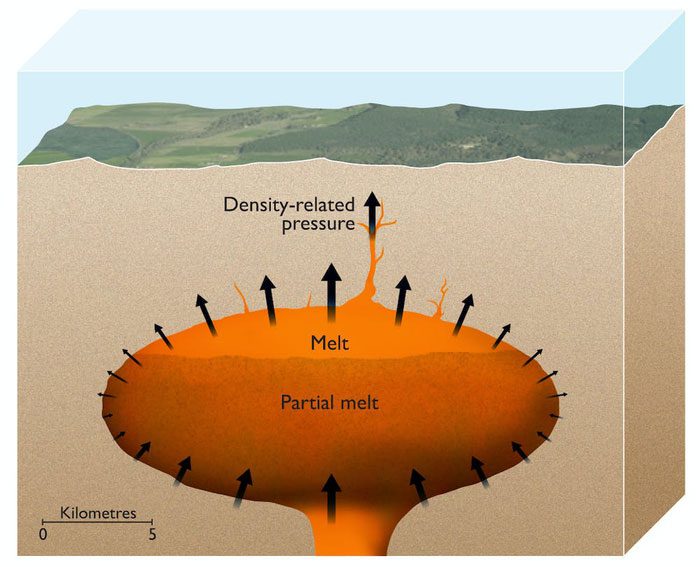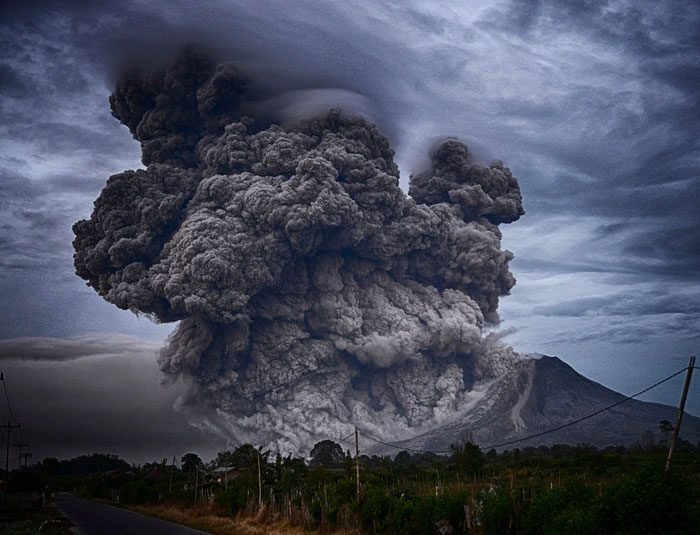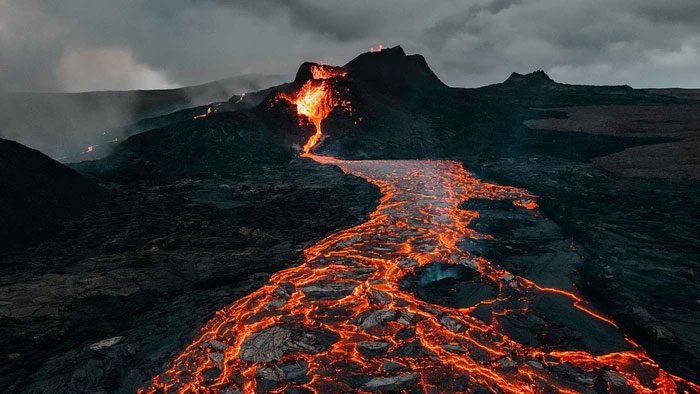Amid the majestic landscapes of nature and the historical wonders of Europe lies a potential danger that has captured the attention of scientists worldwide. This is the threat of a supervolcano, a colossal force of nature capable of catastrophic eruptions and far-reaching global consequences.
Supervolcanoes in Europe
Europe, with its diverse geological structure, is home to several volcanic regions that have shaped the landscape and left many traces from ancient eruptions.
Among these volcanic hotspots is one of the most formidable threats known to scientists – a supervolcano. Hidden beneath picturesque scenery, this giant is capable of causing an eruption of unimaginable intensity.
The exact location of this supervolcano has not been disclosed so far, as scientists are concerned it may cause unnecessary panic among the public.

A supervolcano is a large volcano that has erupted at a level 8, the highest rating on the Volcanic Explosivity Index (VEI). This means the volume of material erupted in such an event could exceed 1,000 cubic kilometers.
However, scientists have long been aware of the existence of this geological phenomenon, characterized by a massive magma chamber underground capable of producing eruptions tens or even hundreds of times more powerful than typical volcanoes. With the ability to erupt thousands of cubic kilometers of ash and volcanic material, a supervolcanic eruption could have profound impacts on both regional and global scales.
Understanding the signs of an impending eruption is crucial for predicting and preparing for potential devastation. Scientists employ a range of monitoring techniques, including seismic activity analysis, gas emissions measurement, and ground deformation assessment.
By closely monitoring these indicators, scientists can gain deeper insights into the behavior of the supervolcano and detect any signs that may signal an increasing eruption risk.
Signs of Imminent Danger
In recent years, researchers have observed minor changes in monitored parameters, raising concerns that the supervolcano may be on the verge of an eruption. Increased seismic activity, such as a rise in small earthquakes or ground vibrations, has been detected in the vicinity of the supervolcano. These seismic shifts, along with other geological anomalies, indicate the potential for heightened volcanic activity deep beneath the Earth’s surface.
A supervolcano is formed when magma in the mantle rises towards the crust but cannot escape, causing pressure to build up in a magma chamber until the crust can no longer withstand it.
Another crucial indicator is gas emissions monitoring. Changes in the composition and volume of gases emitted by the supervolcano can provide valuable insights into its internal processes. Scientists meticulously measure and analyze these emissions, searching for any anomalies that may indicate increased volcanic activity.
Ground deformation, resulting from the movement of magma beneath the Earth’s surface, is another critical factor that scientists closely monitor. By using advanced satellite-based techniques and ground surveys, researchers can identify any significant changes in the shape and height of the supervolcano. These measurements contribute to a comprehensive assessment of the volcano’s state and assist in predicting its behavior.
Potential Impacts and Preparedness
The eruption of a supervolcano in Europe would have profound consequences, both locally and globally. The immediate impact would be catastrophic, with widespread devastation in the surrounding area. Intense eruptions, accompanied by ash clouds and lava flows, would pose significant threats to human life, infrastructure, and the environment.

A supervolcano eruption could completely cover vast areas with lava and volcanic ash, causing long-term climate changes (such as creating a mini ice age) that might lead to extinction events.
Moreover, the long-term impacts of a supervolcano eruption would extend well beyond the immediate eruption area. A massive amount of volcanic ash and gases released into the atmosphere could disrupt global climate patterns. The release of sulfur dioxide could contribute to the formation of sulfuric acid aerosols, reflecting sunlight and leading to a temporary cooling effect on the Earth’s surface. Such global climate changes could affect agriculture, ecosystems, and human health.
In anticipation of the potentially disastrous effects of a supervolcano eruption, scientists and authorities have been working to enhance preparedness and response strategies. Collaborative efforts between international research organizations, government agencies, and emergency management entities aim to develop comprehensive contingency plans, improve early warning systems, and establish protocols for effective evacuation and response in the event of an eruption.

Volcanoes differ from ordinary mountains by having a vent at the summit. Over time, molten minerals with high temperature and pressure erupt through the vent. The material escapes and accumulates on the sides of the volcano, layering multiple mineral deposits. After many eruptions, these layers thicken, forming the shape of the volcano.
Due to the severity of the potential consequences, continuous monitoring of volcanoes remains a top priority. Advanced technological tools, including ground sensors, satellite imagery, and data analysis systems, are used to continuously assess the condition of the volcano. By expanding the monitoring network and enhancing data collection and analysis capabilities, scientists aim to improve their understanding of supervolcano behavior and enhance eruption predictions.
It is important to note that while an eruption of a supervolcano in Europe may be possible, the timing and precise magnitude of such an event remain uncertain. Scientists continue to refine their models, closely monitor the supervolcano, and enhance their understanding of the complex processes at work. The goal is to provide accurate forecasts and timely warnings to mitigate impacts and save lives should an eruption occur.


















































